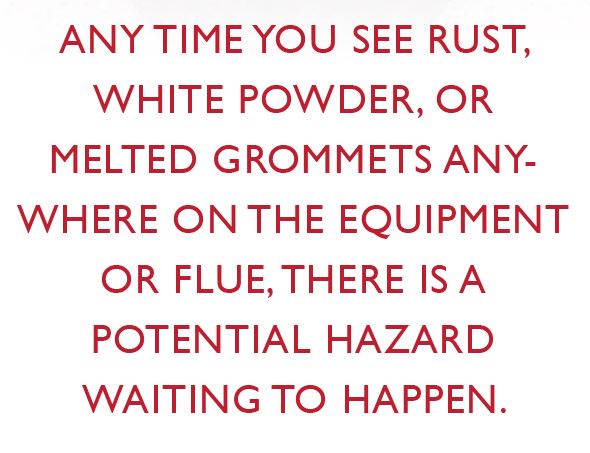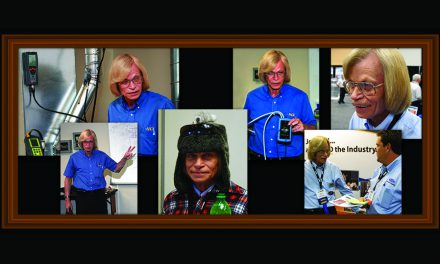I am not aware of those conditions existing in the field. That brings us to a problem that everyone ignores.
Engineering data or specifications on drafthoods or downdraft diverters state they work safely with 40% to 50% dilution air. Does that imply drafthoods work unsafely at different dilution rates?
It’s like telling a skydiver to pull their ripcord at least 300 feet above the ground. No mention of what happens if you don’t, but odds are you won’t repeat this mistake more than once!
With no adjustable control, how can you maintain dilution air? When looking at NCI’s Combustion Diagnostic Charts, we see that the design draft for all drafthood equipment is -.01” to -.02” w.c., as measured in the flue above it.
This is the approximate draft where 40% to 50% dilution air occurs, or at least in lab tests. For those who measure, draft can be much higher.
If dilution air is 50% in the flue, then flue gases should be the other 50%. This means the flue size must handle the quantity of both. Looking at industry venting tables you will notice equipment without drafthoods have a smaller flue size.
What About a Blocked or Restricted Flue?
One of the biggest problems with a drafthood is it allows equipment to operate with a restricted or blocked flue. But they all have blocked flue switches, right? At National Comfort Institute we teach how to correct this problem. However, in an article I wrote many years ago, I was condemned for tampering with equipment to make it safer..

Does a blocked flue switch determine if something is venting or not? The answer is no because it can be spilling out from the burners, especially during high draft conditions.
Any time you see rust, white powder, or melted grommets anywhere on the equipment or flue, there is a potential hazard
waiting to happen.
Testing Draft Diverters
Testing a downdraft diverter or drafthood for spillage or proper venting has different industry recommendations. Some are based on misconceptions. From the beginning, the common practice was to use some kind of smoke and watch it pull into the draft diverter.
Until 1999, the National Fuel Gas Code recommended using a cigarette, cigar, pipe, or match for this test. Now they recommend using a match, candle, or passive smoke. Then there is the standard draft test with a draft gauge. Unfortunately neither of these verify venting.
In the beginning, the downdraft diverter made some sense. Because you could move theme, you could adapt them to existing conditions. If every piece of equipment with these draft diverters had adequate spill and flame roll-out switches, the possibility of unsafely operating equipment was minimal.
But, having proper safety switches might create a bigger nuisance because the equipment would fail more often than when pilots blew out or would keep tripping the safety switches.
Click Below for the Next Page:













Nice article on draft diverter hoods.
I am interested in reading more about the white powder on flue pipes
I am retired now after working 45 years doing heating repairs. Twice I attended NCI’s combustion safety classes with Jim as the instructor. The thinking then was, if you didn’t measure, you didn’t know. Those words made so much sense to me.
The digital analyzer became the best investment that I could have made. It was expensive but very dependable and accurate. There were several times that I was able to track down and resolve CO problems.
By measuring, I found out that what I was seeing in a flame was at times not what the analyzer was seeing.
Following the protocol established for parameters that was provided by NCI kept me on course for not needing to make return calls on something that was serviced the first time.
It’s a good feeling to be able to say that you had a hand in finding problems that could have been serious enough to end up really bad.
Thanks NCI, thanks Jim
.
This is some great writing! I thought I knew draft hoods pretty well… I guess I do a bit better now. Thanks!